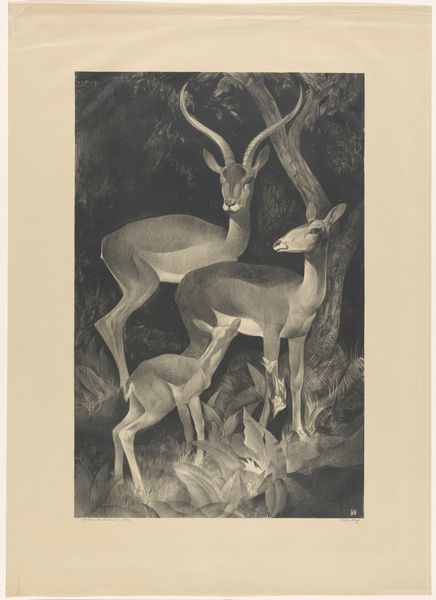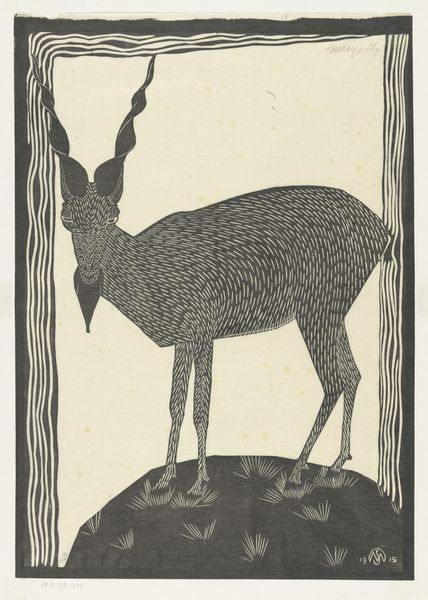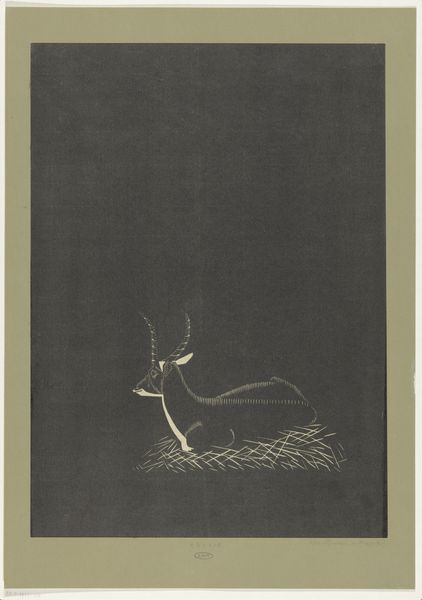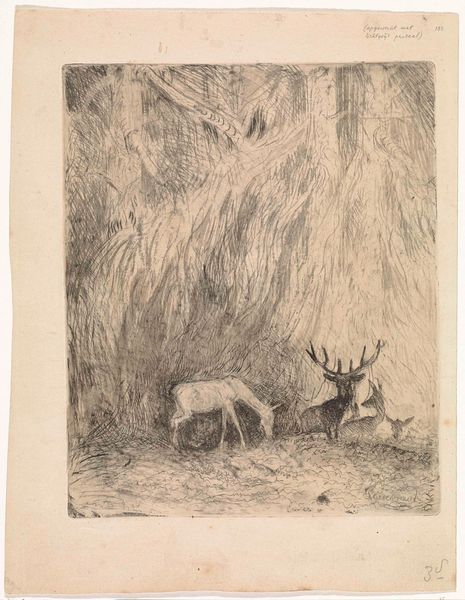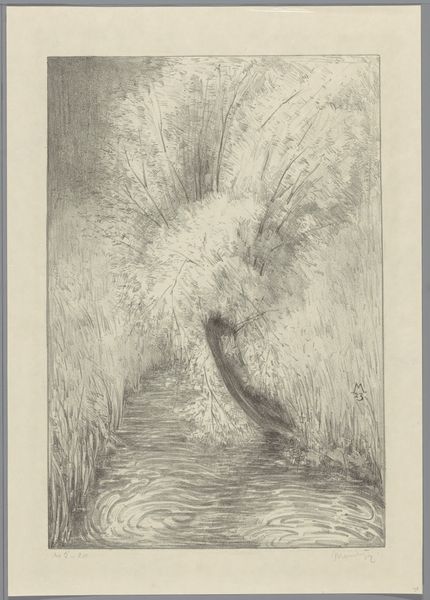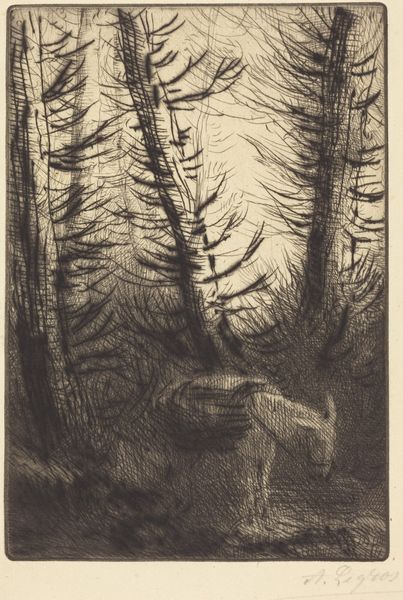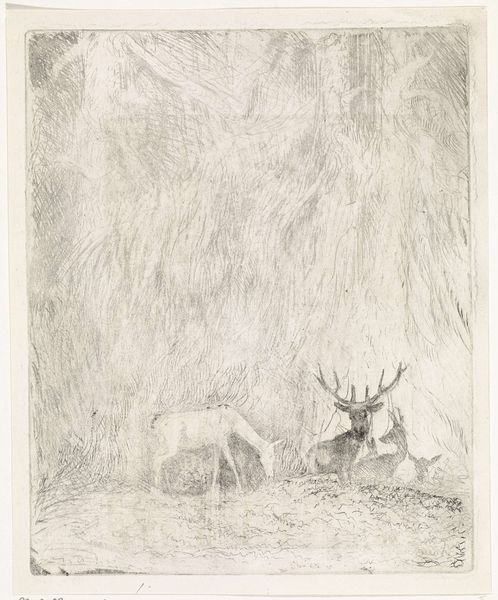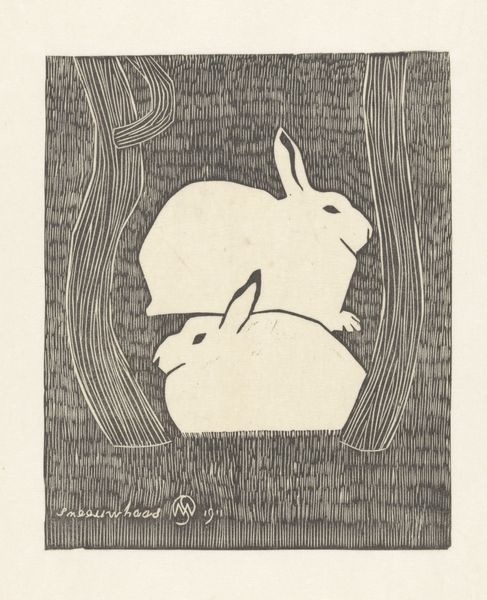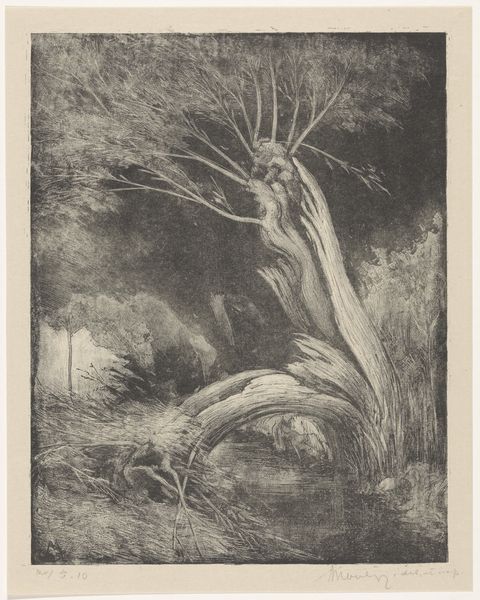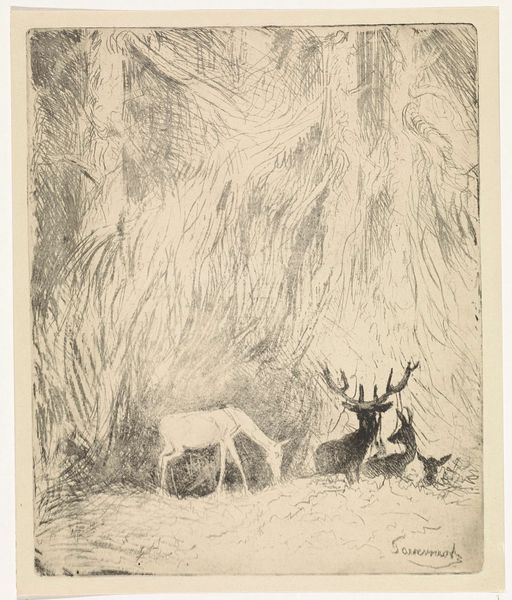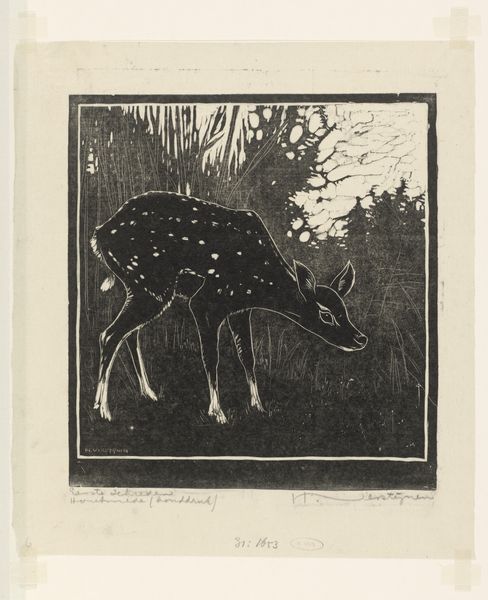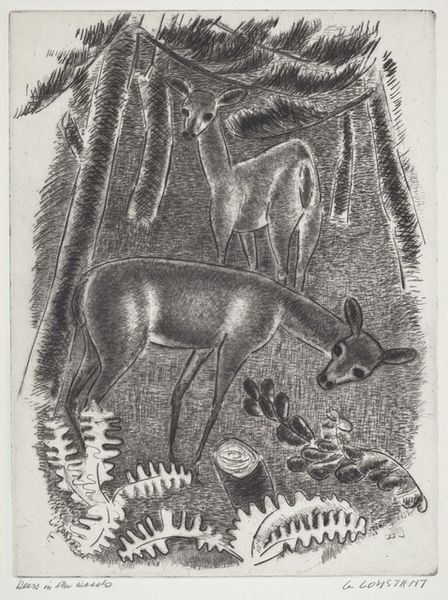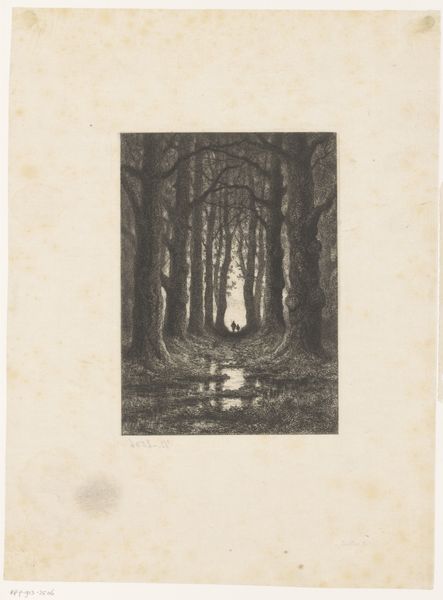
drawing, pencil
#
drawing
#
art-nouveau
#
animal
#
landscape
#
caricature
#
figuration
#
pencil
#
symbolism
Dimensions: height 469 mm, width 311 mm
Copyright: Rijks Museum: Open Domain
Editor: We are looking at “Barasinghahert,” a pencil drawing made in 1916 by Samuel Jessurun de Mesquita, housed here at the Rijksmuseum. The deer seems strangely at peace, but the starkness of the style makes me uneasy. How do you interpret this work? Curator: The disquiet you feel is pertinent. Mesquita, though associated with Art Nouveau and Symbolism, injected a certain edge into his work. This image, with its almost caricatured deer, invites us to consider the historical context. The early 20th century was a period of intense social upheaval. Editor: In what ways does that context shape our understanding? Curator: Mesquita was Jewish, and this work predates the horrors of World War II. Animals often served as metaphors, surrogates within which lived feelings about class and social hierarchy. Consider the deer: it's passive, almost vulnerable. How might that reflect the anxieties felt by marginalized communities at the time? Editor: So the animal isn't just a figure, but also a signifier of larger social issues? The seeming naivete of it feels deliberately contrasted against looming terror. Curator: Exactly. Consider also the highly stylized rendering of nature – the almost regimented grass and trees. Could this suggest the imposition of social order, even control, over the natural world, and by extension, people? Editor: It makes you wonder what anxieties people felt at the time that they portrayed through this artwork! This lends so much significance to the work that I initially missed! Curator: Art often asks us to see beyond the surface, and grapple with complex socio-political realities. This artist does such work to a staggering degree. Editor: Thanks for that, it has definitely widened my interpretation of the work and historical meaning.
Comments
No comments
Be the first to comment and join the conversation on the ultimate creative platform.
